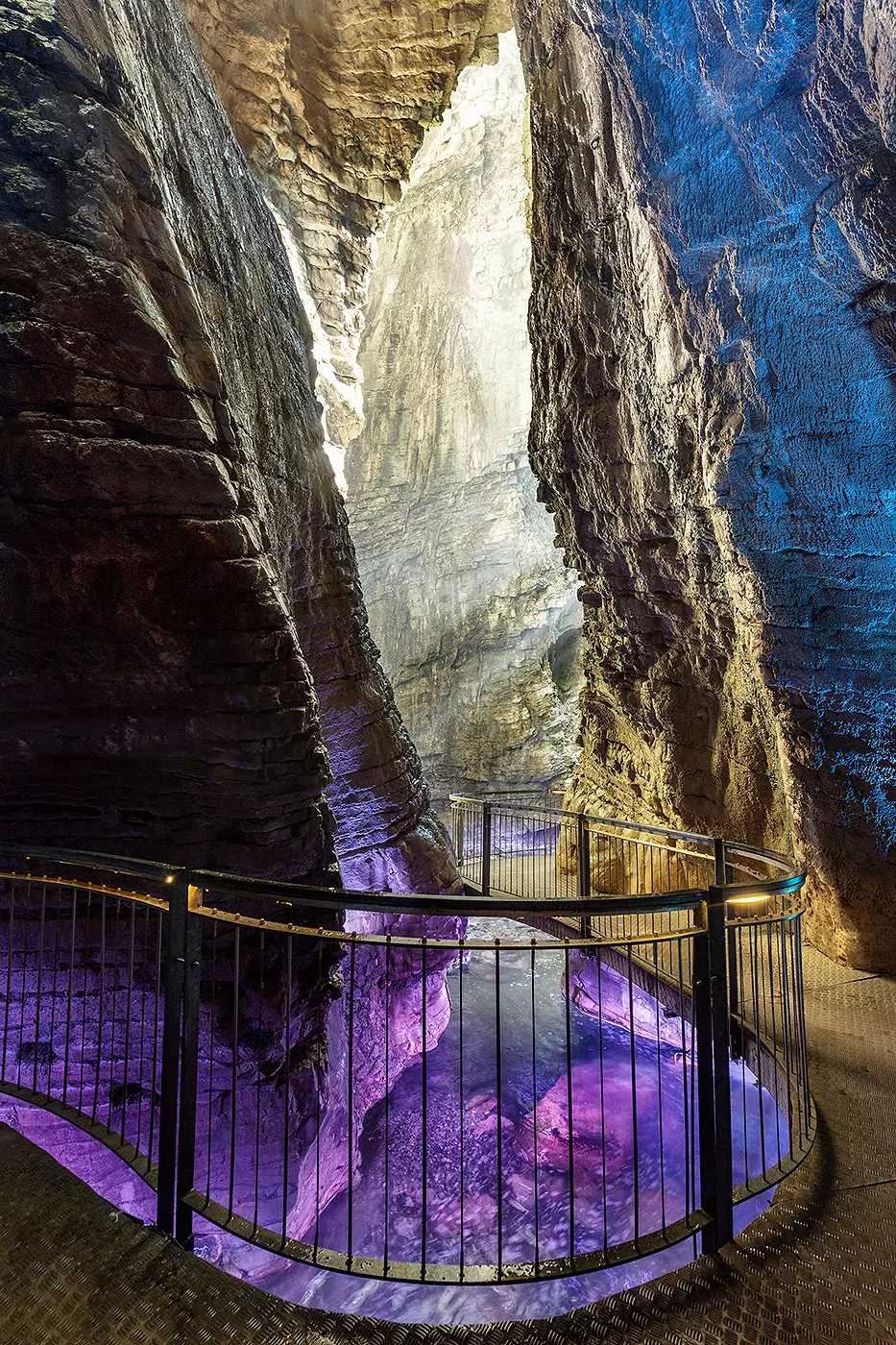

Cave Varone and its waterfall
Geological phenomenon through the millennia
Cave Varone and its waterfall are a rare geological phenomenon, one of the most unmissable Riva del Garda attractions. Let us go back in time some tens of thousands of years to see what took place here.
The great Garda glacier of the Quaternary period is receding. Its slow course has flattened and corroded the area now known as the Lower Sarca Valley and Lake Garda. It has also hollowed out - although to a lesser extent - the lateral valleys such as Tenno-Balllno. Once the glacier had receded altogether, the rivers were free to move in unimpeded and to continue even more energetically the work of erosion begun by the glacier. These waters came flooding down from the Tenno-Balllno valley into the Riva basin underneath.
The water actually fell into the basin much further downstream compared to where it falls today. So the rock face or "threshold" of the Tenno-Ballino Valley was much further forwards. In other words the water fell in the place where today the entrance to the caves stands and the gorge had not yet been created.
Over the centuries, in a period of about 20,000 years, perhaps even longer, the waters, with their load of sand, pebbles and gravel, steadily eroded the rock of the threshold. The erosion naturally had different effects depending on the hardness of the rock. It also followed the original folds of the rock, doing greater damage wherever it found a cavity or fissure.
Furthermore, while the erosion was slow at the beginning, once a hollow had been carved out, the chiselling effect became more and more effective and rapid because it tended to concentrate on this line. On hard rock such as this found here at Varone (Jurassic limestone), the erosion took the form of deep, narrow incisions.
The work of erosion continues today and the water is eating away at the rock to the tune of two millimetres per year. The trajectory of the fall is thus gradually moving back upstream towards the mountain. As a result the eddies are also moving upstream, i.e. deeper into the gorge. The Varone cave is a perfect example of regressive erosion of a waterfall. This means that the work of excavation that is being carried out on the rock face behind the waterfall is causing the waterfall to steadily retreat.
Naturally during the course of this moulding of the rock, occasionally unstable large slabs of rock, stones and piles of detritus have become detached and are washed down, giving rise to the current moulding of the gorge. Today it penetrates into the mountain for a total of 55 metres from the entrance. But at the top. at the level of the top balcony, the gorge penetrates to a depth of 73 metres. And the waterfall drops a total of 98 metres down the gorge.
